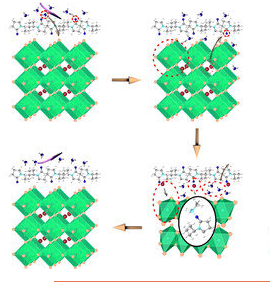The Chinese Academy of Sciences invented the third generation solar cell that can "self heal": the photoelectric conversion efficiency is more than 2.5 tenths
Time:2022-01-15
Views:2228
Recently, Hu Linhua, a researcher in the manufacturing research department of energy materials and devices, Institute of solid state physics, Hefei academy of material sciences, Chinese Academy of Sciences, cooperated with foreign researchers to realize the self repair of perovskite solar cells. The relevant results were published in the Journal of energy chemistry.
Perovskite type solar cells are solar cells using perovskite type organic metal halide semiconductors as light absorbing materials. They belong to the third generation of solar cells, also known as new concept solar cells.
In recent years, perovskite materials have become one of the promising optoelectronic materials in the field of optoelectronic devices because of their excellent optoelectronic properties.
At present, the photoelectric conversion efficiency of perovskite solar cells has reached 25.5%, but perovskite materials are sensitive to radiation and humidity, and are easy to degrade when exposed to atmospheric conditions, which seriously affects their use.
When perovskite solar cells work in air environment, moisture is one of the key factors leading to their decomposition. In view of this, the researchers introduced polyvinylpyrrolidone into perovskite light absorbing materials, which made the solar cells have strong self-healing function and significantly improved the humidity stability.

The films containing (a) and without (b) polyvinylpyrrolidone showed the state change after 60 seconds of steam spraying and 30 seconds of self repair
Polyvinylpyrrolidone is a long-chain insulating polymer with high-density polar carbonyl. When it is introduced into solar cells, it can wrap mapbi3 to form a hydrophobic "barrier" to prevent the invasion of water molecules.
It can also form hydrogen bond interaction with the - NH2 group of methylamine ion (MA), inhibit the decomposition and volatilization of methylamine, and improve the "self-healing" ability of the battery.

In addition, polyvinylpyrrolidone can form an intermediate complex with iodomethylamine and inhibit the nucleation rate of perovskite crystals. The introduction of polyvinylpyrrolidone realizes multiple self repair of the battery, significantly improves the service life of the battery, reduces the defects of perovskite film, increases the grain size, and improves the photoelectric conversion efficiency of the battery.
The research work is supported by the national key R & D plan, the National Natural Science Foundation of China, the "light of the west" talent training program of the Chinese Academy of Sciences and the "European horizon 2020" program.
|
免责声明: 本文章转自其它平台,并不代表本站观点及立场。若有侵权或异议,请联系我们删除。谢谢! |











